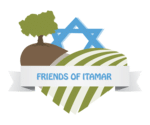Parashat Shoftim
Parshat Shoftim Elul 5768-2008 “When you shall besiege a city for a long time in making war against it to take it, you shall not destroy its trees by forcing an axe against t
Parashat Pinchas
Parshat Pinchas July 18, 2008 In the late 1800’s an officer in the British army and an avid researcher of biblical sites, by the name of Charles Wilson published an important
Parashat Balak
Parshat Balak July 11, 2008 King Balak forms a union with the neighboring nations in order to attack Am Yisrael. Much publicity has been given to the great and mighty nation that b
Parashat Shelach
Parshat Shelach June 20, 2008 “Send people to the Land of Canaan” The Land of Israel is the inheritance of our forefathers and was planned by Hashem for the Jewish peop
Parashat Bamidbar
Parshat Bamidbar June 6, 2008 The book of Bamidbar opens with Hashem commanding Moshe Rabeynu to count the nation. And G-D spoke to Moses in the desert of Sinai in the tabernacle o
Lag Baomer Message
Lag Baomer-2008 May 23, 2008 Lag Baomer has always been a great day in itself; before the days of Rabbi Shimon Bar Yochay, and even before the counting of the Omer. It is the day t
Lag Baomer
Bahar- Lag Ba’Omer May 16, 2008 Rabbi Shimon Bar Yochay was one of the five surviving students of Rabbi Akiva that all died between Pesach and the Atzeret. It is brought down
Parashat Vayikrah (connected to parashat Pikudey)
Pekudey- Vayikra March 14, 2008 Dedicated to the Kdoshim meMercaz Harav The tabernacle was built and dismantled many times on the journey through the desert. Mainly, this is the th
Purim
Dear Readers, A few years ago, my husband and I and some of our children went to demonstrate against the disengagement from Gaza- what in essence was actualized in the dismantling
Tu B’Shvat
Tu B’Shvat January 24, 2008 On Tu B’Shvat the source of potential growth in all spheres of life awakens. The tree in the field stands bare exposed to cold, wind, and ra

